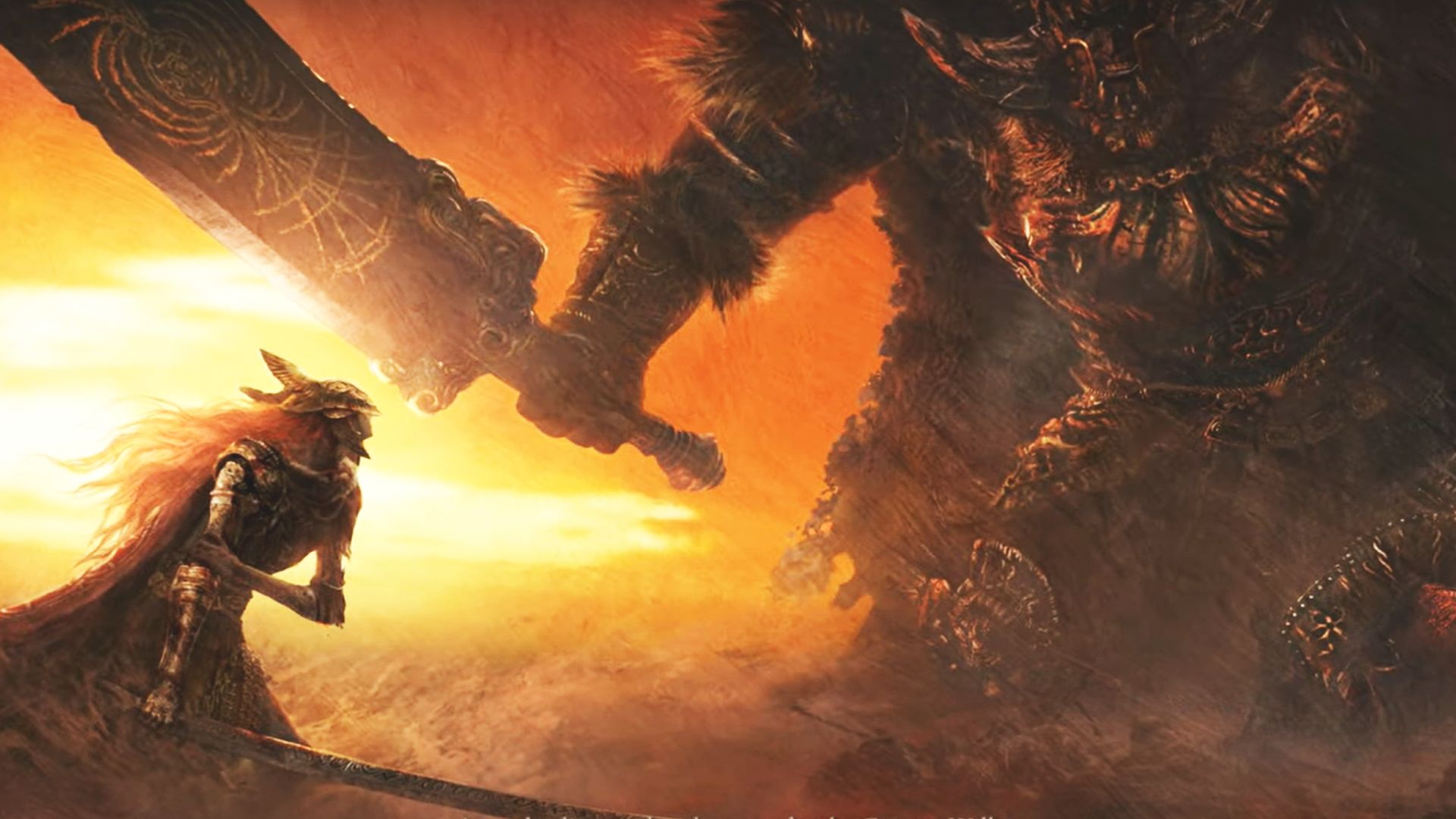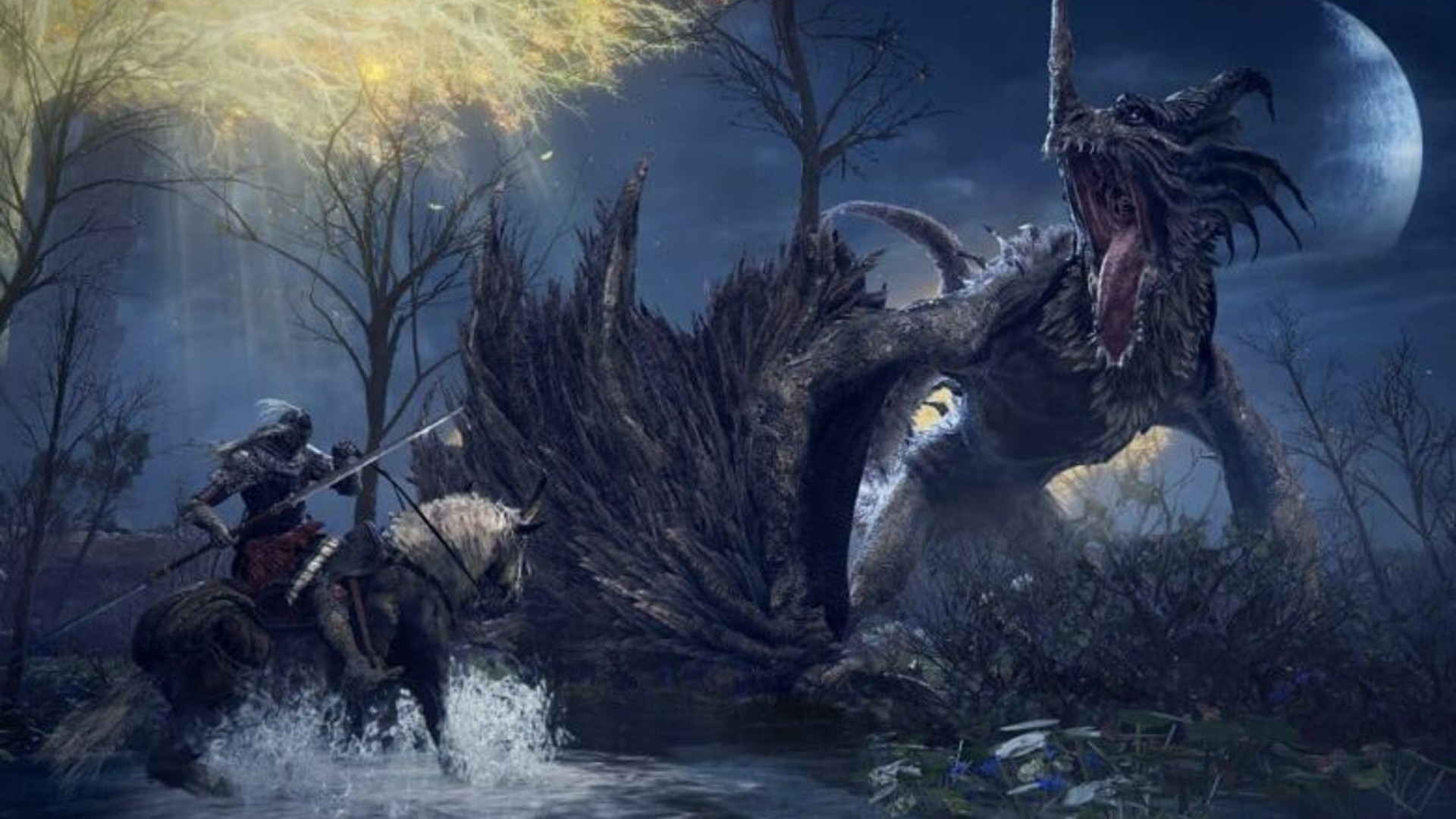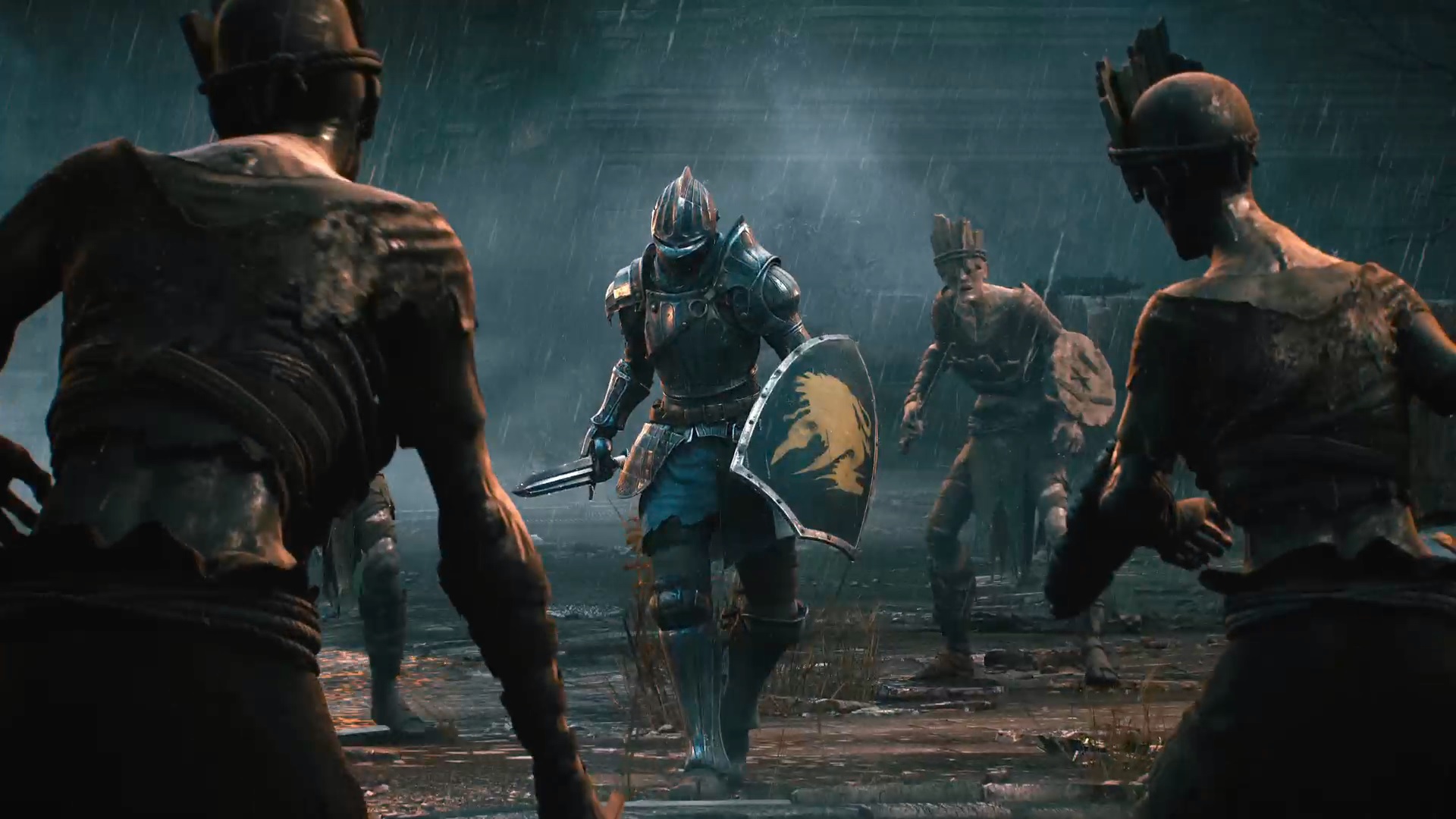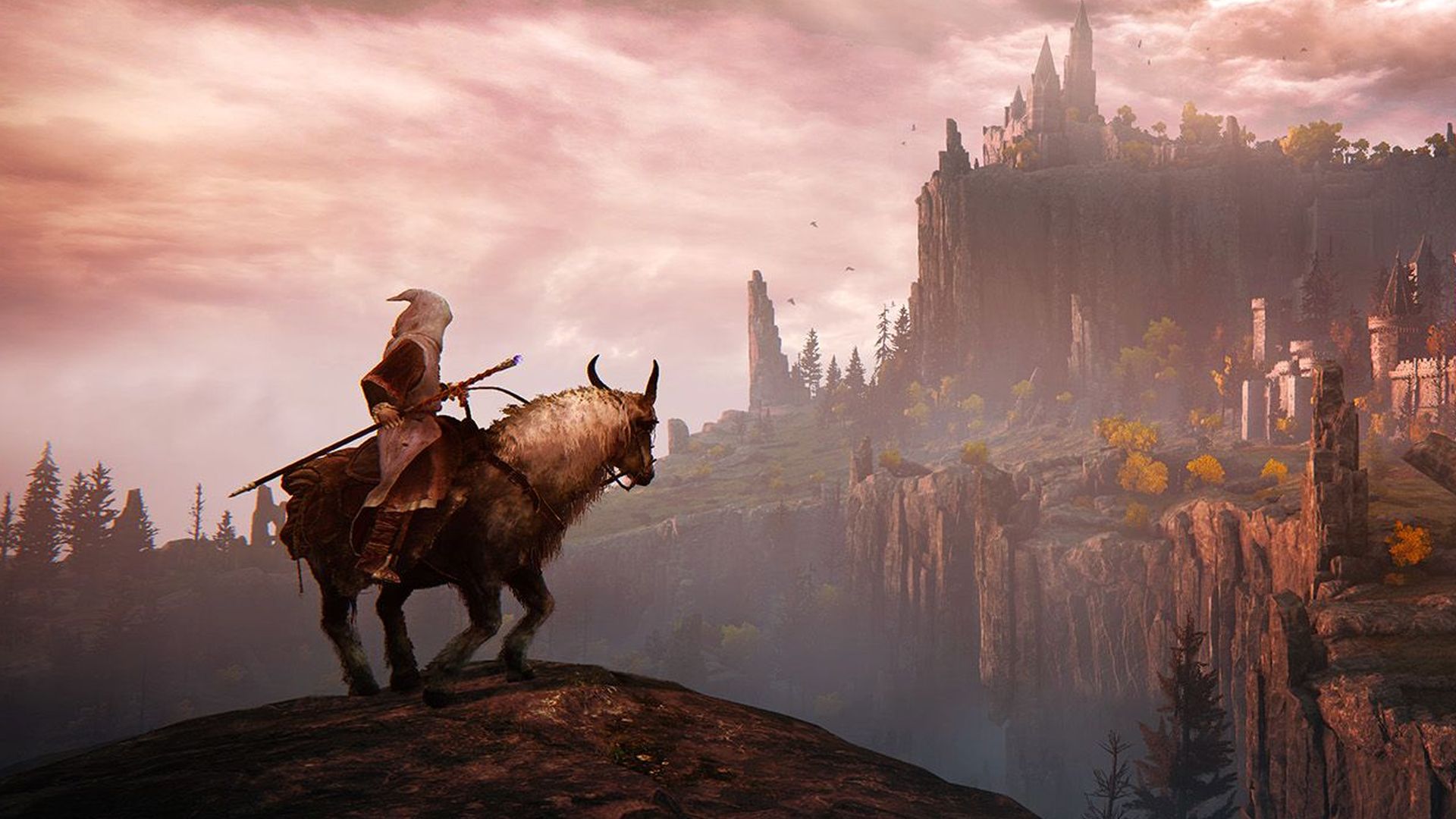I don't believe Elden Ring is more approachable, but it's definitely more sensible
Elden Ring hates you like any other FromSoftware game, it's just smarter about it this time around

For three days last week, my life in Elden Ring was a dark and twisted Groundhog Day. Instead of Bill Murray, I had the Tarnished. Instead of Andie MacDowell, I had Nepheli Loux. Instead of a lauded rodent mascot, I had three prized Lone Wolf spirits. And, instead of battling the same looping 24-hour cycle over and over again, I had Godrick the Grafted kicking my arse all over the shop. All that was missing was Sonny and Cher on a bedside radio-alarm clock.
Make no mistake: Elden Ring can be as punishing as any of FromSoftware's previous action-RPGs. You may have read elsewhere that it's more approachable than the developer's back catalogue, but I'm not convinced it is. My dealings with Godrick the Grafted – the game's second mandatory boss fight – gave me the same infuriating/glorious deja vu suffered at the hands of Bloodborne's the Orphan of Kos, Sekiro's Isshin Ashina, and Dark Souls' Ornstein and Smough, the battle itself reflecting the same try-fail-repeat cycle FromSoftware games are renowned for. What is different here is the set-up, with Elden Ring introducing a number of gamified features that make the process of dying again and again (and again) much easier to stomach. I don't necessarily believe Elden Ring is more approachable, then, but I do reckon it's more sensible.
I got you, babe


Does Elden Ring have what it takes to become this generation's Skyrim?
I know, I know, git gud mate. It seems this tired branch of the 'how difficult should video games be?' discourse hasn't moved on since FromSoftware's last outing. But, actually, part of what I love about the developer's games is just how hard they make me work, despite how much they beat me down in the process. Having lived through its previous outings over the last 13 or so years, I think it's safe to say FromSoftware games aren't for everyone. And I'd even argue that the changes to how bosses are set up in Elden Ring compared to previous Souls games aren't designed to welcome a new audience (even though its massive sales figures show it has), or to make the game feel more approachable, but to help streamline the process for those already familiar with how these games tend to work.
The most obvious example of this is the frequency and the locations of its Sites of Grace – Elden Ring's answer to bonfires, where players can replenish their health and magic, level-up, and rest, safe in the knowledge they'll respawn here upon their next inevitable death. In 2009, Demon's Souls had no such mid-level checkpoints, and while shortcuts could be unlocked in most areas, the path back to any given boss arena after biting the dust was always arduous. In the Tower of Latria, for example, the player can take two paths to the first stage's end-of-level Fool's Idol battle: one of which is packed with Mind Flayers and Black Phantoms; the other of which is filled with fewer generic enemies, but involves dodging a volley of deadly arrows from a big bastard catapult. Whichever route you choose, an invisible archer awaits your arrival on the stairs leading to the boss arena because, well, just because.
Similarly, the route from bonfire to boss fight in Dark Souls' infamous Ornstein and Smough showdown involves fighting/sprinting past a handful of Silver Knights and two hulking Royal Sentinels – the latter of who wield Giant Shields and Halberds. Yes, those weapons are as terrifying as they sound.

In Elden Ring, however, checkpoints are scattered liberally throughout the world map, its dungeons, its keeps and its strongholds – to the point where if you happen upon one, there's a good chance there's a boss or a stronghold brimming with baddies somewhere in the immediate vicinity. Better still, the Sites of Grace that precede each boss battle sit just outside of their respective arenas, meaning you're free to stroll between your respawn point and your next David vs Goliath set-to without the worry of being felled while running the gauntlet.
With Margit, The Fell Omen, this involves a short, 30-second saunter along the Castleward Tunnel. With the aforementioned Godrick the Grafted, you simply round the corner from the Secluded Cell. Being able to run boss battle attempts back-to-back makes failure feel fleeting, and prevents fatigue or an inordinate amount of frustration from setting in while reading "YOU DIED" more times than you care to admit. Moreover, while summon points are often localised to the areas you need them most – i.e., next to boss gates – by sending a co-op sign to the summoning pool (with your small golden effigy) you can make yourself available to be summoned in areas you've already visited yourself, while you crack on with your own adventure. In practice, this saw me being called way back to fight the Tree Sentinel – the nearest overworld boss after leaving the tutorial – on a handful occasions when I had offered myself at a summon statue deep within Stormveil Castle.
Sign up to the GamesRadar+ Newsletter
Weekly digests, tales from the communities you love, and more
The world is yours

"I'd grown comfortable in the try-fail-repeat loop that I'd forgotten about the prospect of progression. Now there's a terrifying world rolling out before me, with bigger and badder bosses who'll invariably kick my arse harder than Godrick."
Unlocked during its final third, fast travel cheapened exploration in Dark Souls for me, whereas the ability to do so from the outset in Dark Souls 2 and Dark Souls 3 made their worlds feel less connected than the original game. In Elden Ring, however, the entire open world can be explored from the outset – you can even seek certain paths to circumvent mandatory bosses – and while you can only fast travel to the Sites of Grace you've visited, the fact that you can access end-game areas from the off is a great way of levelling up early, assuming you're willing to balance risk versus reward. Zelda: Breath of the Wild let us do this in 2017, of course, but in lieu of familiar RPG gimmicks, such as levelling and skill trees, the ability to do so in that game felt less significant.
Friendly player summons have always offered a leg-up in Souls games, but the simple ability to craft batches of Furlcalling Finger Remedies – Elden Ring's answer to Dark Souls' Humanity – makes that process more straightforward. NPC summons, by way of Spirit Ashes, offer another layer of back-up in battle – help that can only be called upon when throwing down against a boss or sub-boss out in the wild – which invariably alter the flow and pacing of battles. Do you unleash your hapless Wandering Noble Ashes at the beginning of a fight to act as a distraction, or do you save your Lhutel the Headless spirit for a late OP onslaught?
When death is so prevalent in Elden Ring, these little decisions feel so important and can have huge implications. Failure is always an integral part of these games, but the scope to temporarily abandon boss runs, go walkabout, level up and return overpowered is blown wide open as a result of Elden Ring's massive playground. And it's here you'll appreciate the subtle nips and tucks that apply beyond boss arenas – such as having your magic and health flasks restored after you've cleared out enemy gangs (signalling that, no there aren't any more foes hiding behind the next bend); or the fact that skeletons can be killed without Blessed weapons.
The one obvious drawback of having such a rich and massive world to explore at any given time in Elden Ring is when you do topple a once insurmountable foe. I genuinely couldn't say how many times I fell to Godrick the Grafted, how many times I entered Groundhog Day, and was sent back to the Site of Grace inside Stormveil Castle's Secluded Cell to the tune of 'I Got You Babe' by Sonny and Cher. But, after many, many, many deaths, I did, somehow, prevail. I felt joy, triumph, euphoria and then… terror. I felt emptiness. The same feeling of finishing your favourite Netflix drama after six long seasons. I'd grown comfortable in the try-fail-repeat loop that I'd forgotten about the prospect of progression. Now there's a terrifying world rolling out before me, with bigger and badder bosses who'll invariably kick my arse harder than Godrick. And, thanks to Elden Ring's more sensible approach to bosses, battles and pacing, I wouldn't have it any other way.
Struggling in the Lands Between? Check out our super-comprehensive Elden Ring guide for survival tips and tricks.

Joe Donnelly is a sports editor from Glasgow and former features editor at GamesRadar+. A mental health advocate, Joe has written about video games and mental health for The Guardian, New Statesman, VICE, PC Gamer and many more, and believes the interactive nature of video games makes them uniquely placed to educate and inform. His book Checkpoint considers the complex intersections of video games and mental health, and was shortlisted for Scotland's National Book of the Year for non-fiction in 2021. As familiar with the streets of Los Santos as he is the west of Scotland, Joe can often be found living his best and worst lives in GTA Online and its PC role-playing scene.


